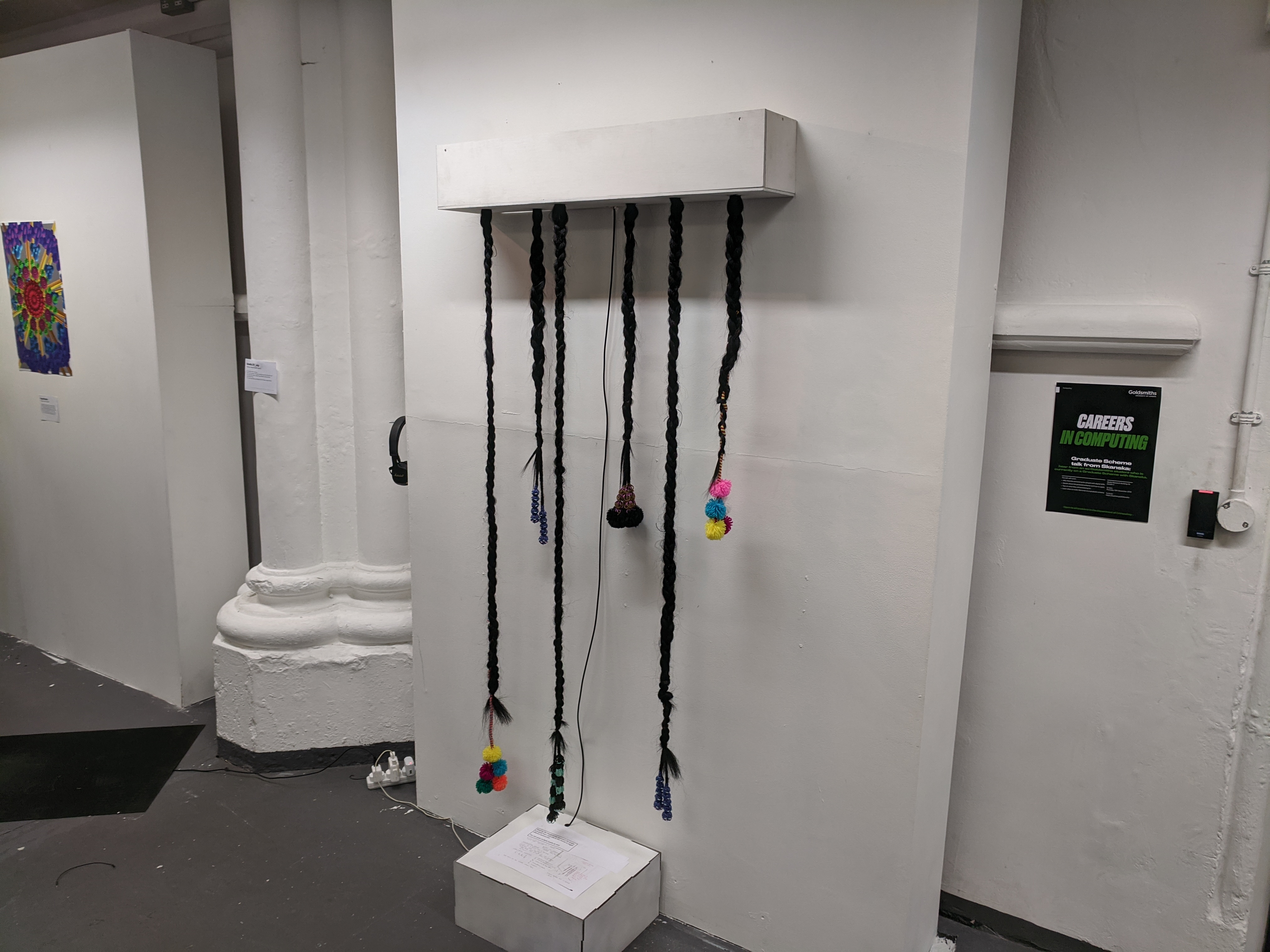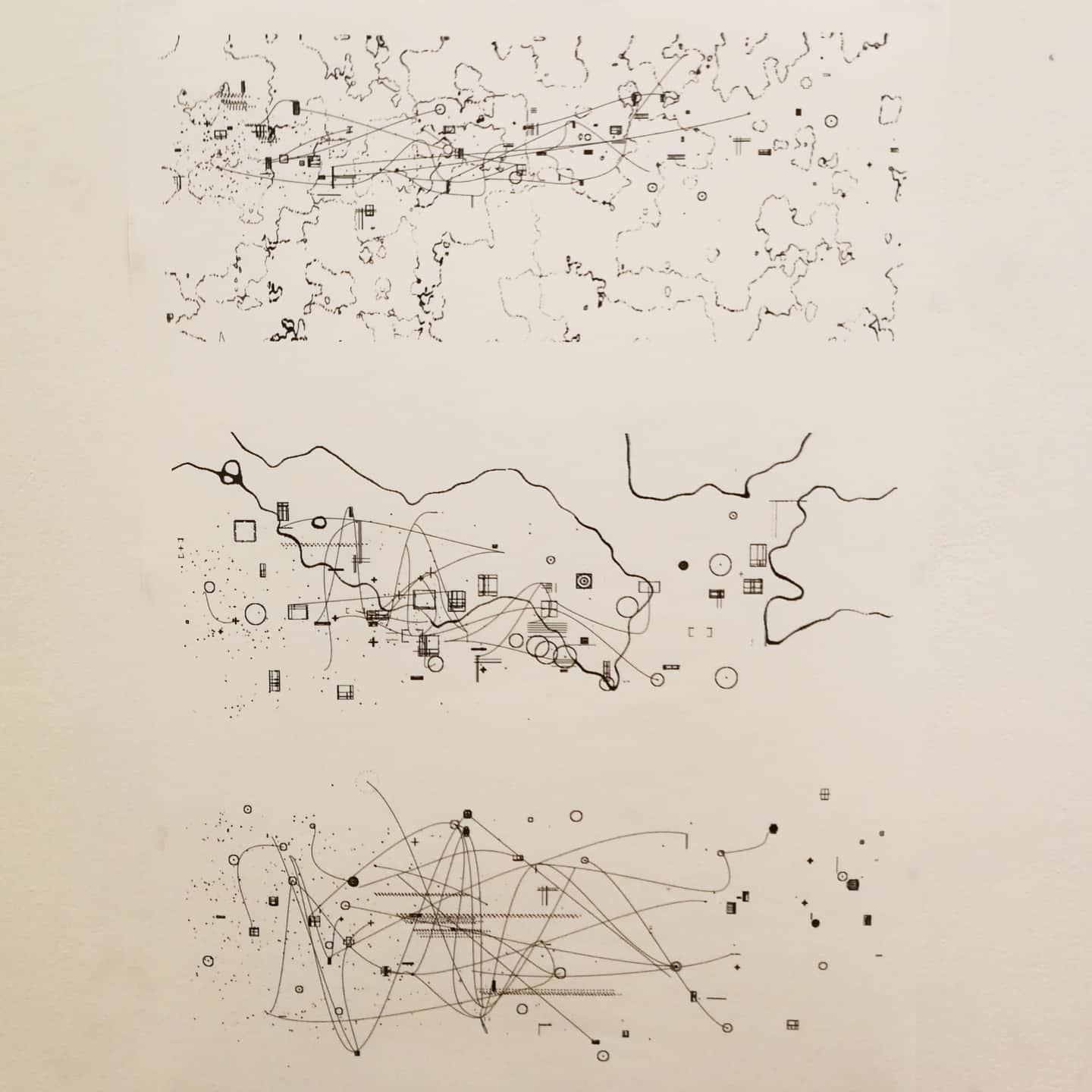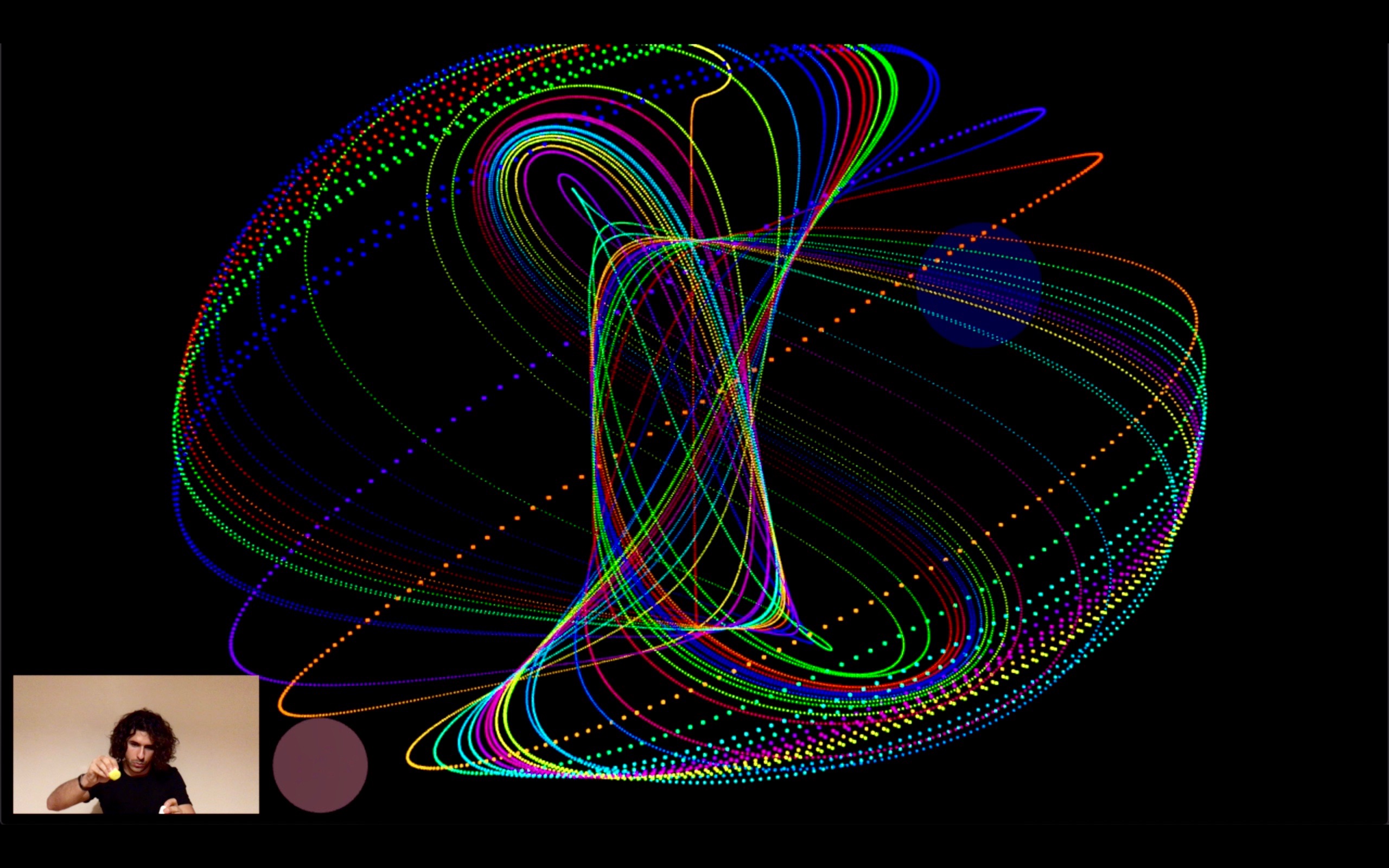Push, Pop, Repeat – Pop-up exhibition
Written by Clémence Debaig, student in MA Computational Arts
One night, 350+ visitors, 80+ students, 130+ pieces
Push, Pop, Repeat is the first pop-up exhibition of this year’s cohort – presenting works from the MA in Computational Arts and the MA in Independent Games and Playable Experience Design. On Wednesday the 22nd of January 2020, more than 350 visitors have had the opportunity to discover more than 130 artworks.
Most students in the programme had no, or very little, programming experience when they joined in October. After only 10 weeks on the course they are already producing high quality interactive pieces, adding computing to their art practice. The exhibition hosted an incredible variety of works produced at the end of the first term, from generative projection-mapped pieces to physical computing installations.
Selected works
Selecting works amongst more than 130 pieces is an almost impossible task, but the following pieces particularly grabbed the attention of the visitors. This selection also aims at showcasing the diversity of the projects presented during the pop-up.
Amor Serrano by Alesandra Miro Quesada
Interactive installation – Physical Computing 1
Amor Serrano tells the story of domestic violence in the Andes. Two testimonies of survivors have been recorded and translated from Spanish to English and Quechua (native Andean language). This piece pushes the audience to face the epidemic of feminicide happening in Peru and create discourse on this topic.
Technical details: The circuit includes 6 capacitive sensors, each soldered onto a long copper wire braided inside 6 foot long hair extensions. When touching the hair, it triggers different audio tracks. Each of them narrating a testimony of a domestic abuse survivor.
More from Alesandra Miro Quesada
A cartography of the inside out by Jakob Jennerholm Hammar
Poster – Programming for artists and designers
The program draws structures in time, continually growing over a scarce landscape. A fictional world filled with fictional habitats for fictional inhabitants is created. The work tries out ideas of mapping an interiority and turning it inside out to see what it says about it’s exteriority, or the other way around. Some important influences where gathered from cartography and architectural plans and drawings as a way of understanding and visualizing relationality. Others where graphical notation or visual scoring as a way of working with duration and events in time.
Technical details: The artwork is generated by a program written in Processing. Noise functions and pseudo randomness as well as recursion and fractals are some of the techniques used in the generative process. Printed on A2 sized wallpaper material.
More from Jakob Jennerholm Hammar
Blurred Democracy by Camila Colussi
Interactive Installation – Physical Computing 1
Blurring boundaries. Blurred democracy. Two vibrating motors are connected to the word “democracy” written in copper wire. The motors react to sound. Light is reactive to distance. As you walk away, lights turn chaotic. As you get closer, lights turn on completely. The piece was created in reference to the current Chilean revolution (October 2019-present), which main massage of fight is “Until dignity becomes habit” (“Hasta que la dignidad se haga costumbre”). Until today, serious human rights violations had taken place. Sound recording: “No son 30 pesos, son 46 años”, A las Cacerolas, Colectiva 22bits.
Technical details: The piece is a sound-light interactive sculpture, using 2 vibrating motors, a proximity sensor and led strip lights.
_chreeb.dampGrass by Keir Clyne
Interactive system and performance – Physical Computing 1 + Programming for artists and designers
_chreeb.dampGrass is a choreographic collaboration between a human user and a virtual dancer. Through the use of a specialist controller and a virtual avatar named “_chreeb”, the creative control of the improvised choreography switches between the human and non-human participants.
Technical details: The system for this performance has been made using a Processing sketch connected to an Arduino controller. The controller itself is made of several arcade buttons, LED’s and toggle switches all housed in a cardboard casing
Tantum Duck by Mattia Spagnuolo
Audiovisual performance – Advanced Audio-Visual Processing
Tantum Duck is a Hand-controlled Audio-Visual Synthesizer. By mixing computer vision, sound synthesis and mathematical visual shapes the goal was to create an instrument that allows the performer to control both audio and visual parameters at the same time. A constant correlation between the audio and visual outputs is implemented to allow the performer to focus on the sonic and visual details of his/her performance without worrying about keeping them harmonic, as they will always be.
Technical details: The system has been realised in openFrameworks, using computer vision and color tracking to identify the controls and using frequency and amplitude modulation (FM and AM) for the sound synthesis. To follow the chaotic nature of the sounds, the visuals are based on the chaotic map Aizawa Attractor. A chaotic map is a system of differential equations whose apparently-random states of disorder and irregularities are governed by deterministic laws that are highly sensitive to initial conditions, meaning that a small change to any of its coefficients, will result in a substantial change in its output.
Automata by Clémence Debaig
Interactive wearable and performance – Physical Computing 1
AUTOMATA is a performance device allowing the dancer to move elements of the outfit by his/her movements. This piece explores the relationship between puppeteer and object, and the transfer of agency between the two. Is the dancer moving to manipulate the objects or is the movement of the objects influencing the dancer. Who is controlling who?
Technical details: The dancer is wearing an accelerometer on the right arm and another one the left leg. The values received on the accelerometers control the movement of 7 servos placed on the outfit, moving mechanical parts. 3 “flowers” and the left shoulder pad are controlled by the right arm. 2 other “flowers” are controlled by the left leg. Particular attention has been put on the analysis of the acceleration values on each axis (X, Y, Z) to determine with one to use and set different thresholds for each servo.
X Y Plotter Drawing Machine by Chia Yang Chang
Installation – Physical Computing 1
Drawing machines have been explored for a while but it is still a recurring theme to observe the differences in drawing between Robot and Human. Drawing is a way to express one’s humanity. However, would it be possible for robots to express the essence of being a robot through drawing? This project is presented more as an experiment than an artwork, aiming at reflecting on the meaning of what the essence of a robot is and observing the similarities between human and robot.
Technical details: The drawing machine is using an Arduino and a Processing sketch, connected via serial. The Processing sketch extracts vector points from an SVG file and then sends it to the Arduino to define the position of the pen.
The Chicken of Tomorrow by Annina Huhtala
Projection mapping – Workshops in creative coding
The Chicken of Tomorrow is a projection mapping work devoted to chicken. Combining archive video material and the latest research, it tells the brief story of a bird turned into a commodity. The visuals plays with naïve form and bright colours, yolk yellow, egg white and wattle red. They represent our simple attitude towards chicken. The piece begins with a nostalgic clip of children playing with fluffy chicks. According to studies, we now struggle to consider chicken as animals.
Technical details: The work was created in openFrameworks, mixing generative graphics, typography and videos.





































































